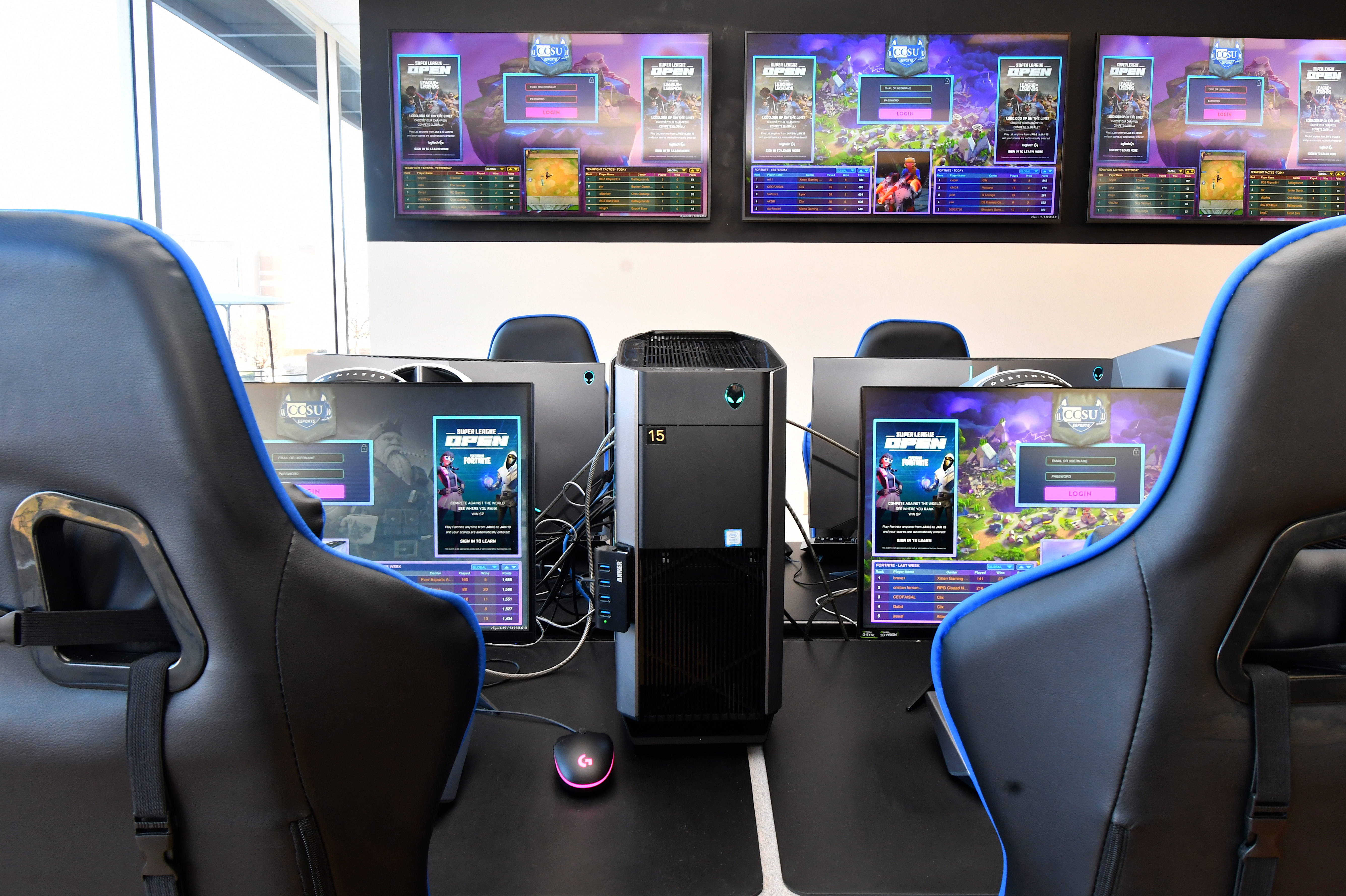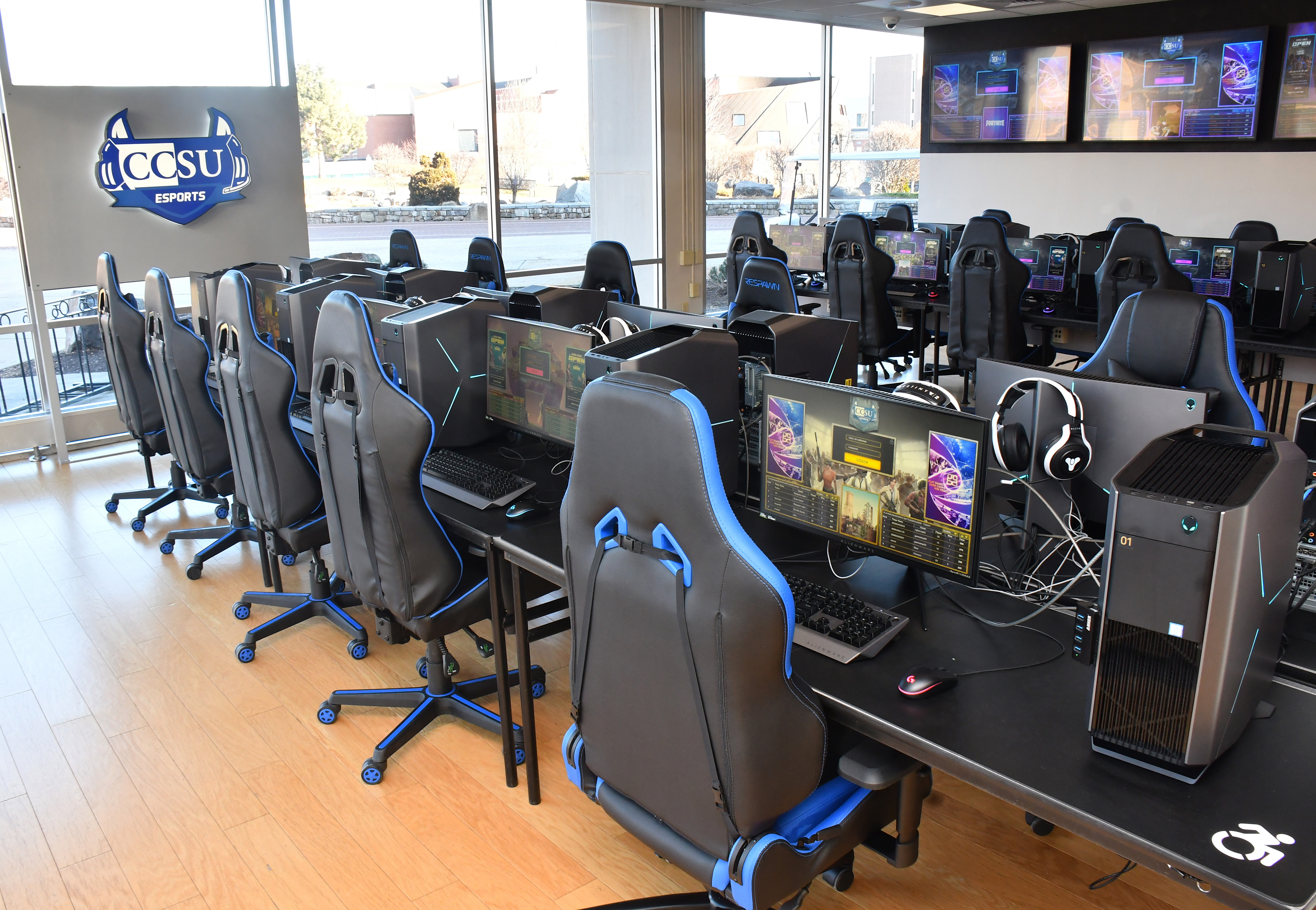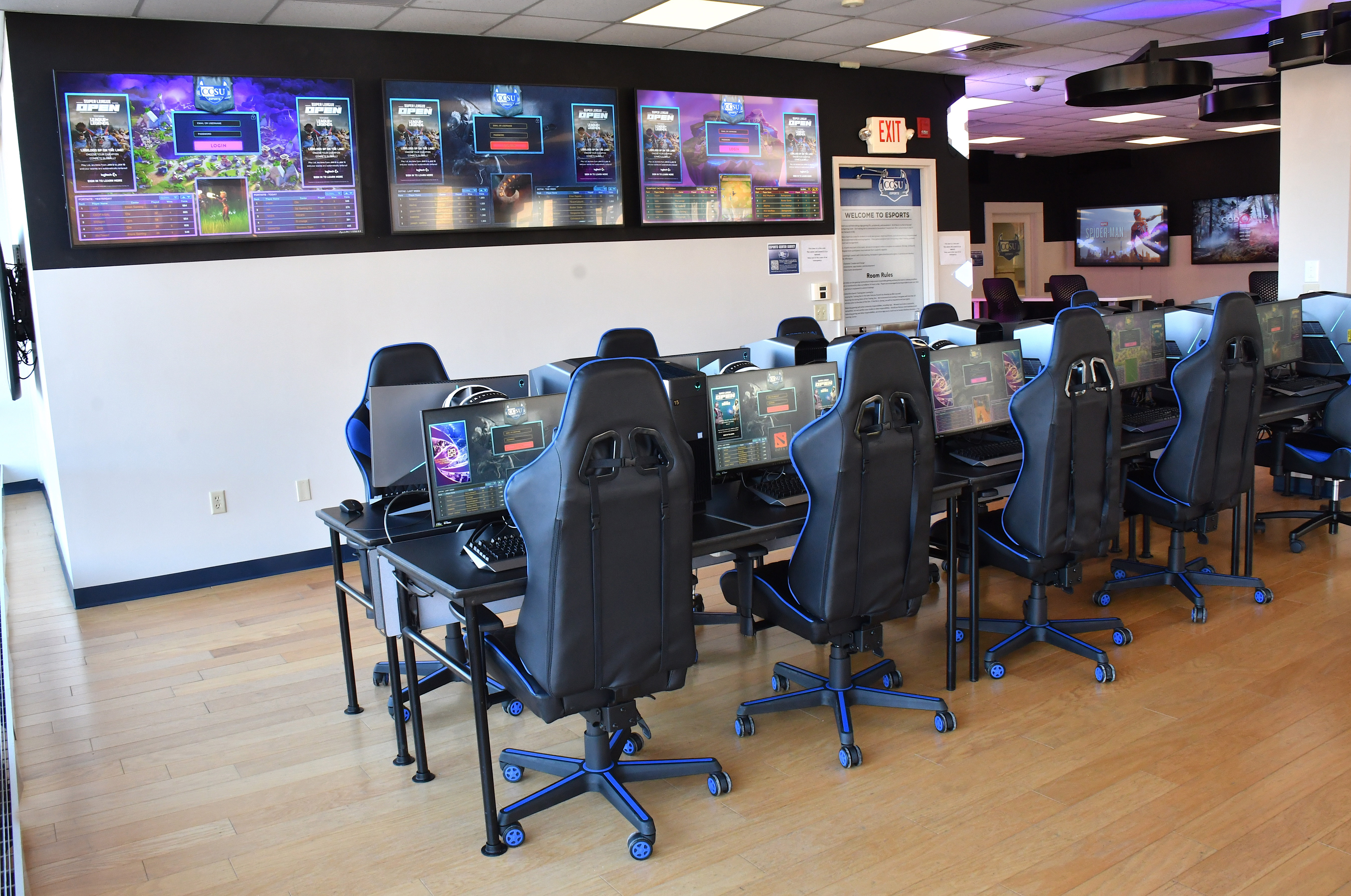With two years of hybrid or fully remote learning in the books, colleges and universities understand a digitally-enriched, future-proofed, and layered education experience is what students, faculty, and other stakeholders expect moving forward. This is most visible in the classroom, where the collaborative AV infrastructure has evolved from individual overhead projectors and manual pulldown screens to one-touch videoconferencing connectivity and remotely-managed AV-over-IP distribution for dozens of displays. The utility of these solutions in a hybrid learning environment is both plain to see and well reported on. Often, the more instructive technology integration projects on higher education campuses are actually found outside the classroom.
Many of the most popular and intellectually productive social and athletic pursuits are built on technology backbones. Perhaps the best illustration of this idea is college esports, which has grown from a niche interest to the brink of monoculture. To give an idea of how ubiquitous esports have become, consider that more fans watch the League of Legends World Championship than the Super Bowl and 32 percent of 13-39-year-olds say they would rather watch an esports competition on television than a traditional sports game like football, according to a data report from YPulse. Schools are increasingly capitalizing on this massive level of interest by building state-of-the-art esports facilities and using these technology-rich spaces as tools for recruiting, retention, community-building, varsity sports, and even academics. The expansion of esports in higher education is a boon to technology manufacturers and integrators ready to get in the game.

Contextualizing Esports

“Today’s students walk into their campus esports lab to play Super Smash Brothers with strangers much the way previous generations showed up to the park to play pickup hoops.” —George Claffey
The question of how to define esports is a complicated one because unlike traditional sports such as football or hockey, esports as a category includes any video game that is played where there is a “win-state.” Countless games fit that description, but most schools officially compete in only the most popular half-dozen or so. Among that select group are League of Legends, Overwatch, Rocket League, and Call of Duty.
There are a variety of reasons games like these, and esports more broadly, have become so popular. Perhaps the most obvious reason is that esports are digital, not physical. Not only does this allow players to participate regardless of their physical athleticism, but it also renders the games “placeless.” That means players of any size and shape can compete from anywhere in the world which levels the playing field and opens games up to far larger pools of participants. Fans can watch from anywhere in the world, too.
Esports has exploded at the college level in particular and schools have realized they have an opportunity to meet students where they are by offering a highly social activity that the current college-aged demographic grew up immersed with. “Today’s students walk into their campus esports lab to play Super Smash Brothers with strangers much the way previous generations showed up to the park to play pickup hoops,” explained George Claffey, Chief Information Officer of Central Connecticut State University (CCSU), which supports varsity teams in three distinct games. “Our facility is a great recruiting tool for exactly that reason, and we even use it as the site for Connecticut’s high school esports championships.”
AV/IT Technologies Needed to Support Esports Programs
So where do technology manufacturers and integrators come in? To outfit the facilities, of course. Esports are played in arenas that are essentially elaborate computer labs—medium-sized rooms outfitted with state-of-the-art machines, configured specifically for the purpose of competitive gameplay and broadcast. Some schools repurpose existing computer labs for this while others spend millions on a new build. Schools like Miami University (Ohio) with Division 1 varsity teams also outfit their arenas with “casting space” for commentators and production teams to broadcast the action to fans in the stands and to a much broader online audience. These spaces have significant infrastructure needs.
In addition to the gameplay monitors, CPUs, and lighting, esports arenas require tools for signal distribution and routing, often via AV-over-IP solutions. During matches, these tools allow broadcast teams to toggle between feeds on their own displays while casting others’ content to main feeds. During practices, it lets coaches use real-time “game tape” to educate their players. Doing this over the network cuts down on latency, obviously a critical element of successful gameplay and consumption. While some of this investment might sound like bells and whistles, it’s hugely necessary because a lot of the video production, editing, and control is happening elsewhere on campus. Having a high-throughput video systems with low latency is a must.

In more than a few cases, successful esports arena investments have been parlayed into larger technology investments elsewhere. These additional projects can include things like XR labs where virtual “hands-on” experiences can replicate real-world experiences, giving students greater exposure to their chosen fields before they have to fully commit to that choice.
Esports in higher education is growing exponentially. More than ever, these programs need the expertise from AV/IT manufacturers and integrators. “As we look to the future, we’re looking at how to leverage these technology investments to help students connect with next generation technology,” concluded CCSU’s Toro. The time is now for manufacturers and integrators to get in the game.

